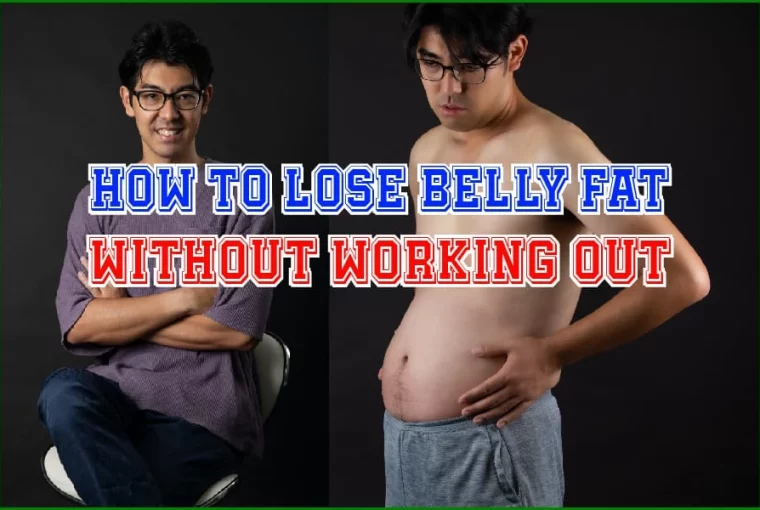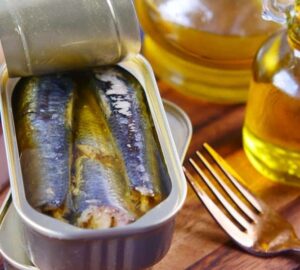Today, people are actively trying to live healthy lives. Folks are more aware of what they consume due to dietary trends.
In industrialized nations, the prevalence of lifestyle-related ailments is extremely high. People over the age of 25 are the most impacted population. In the United States, 33 percent of all adults are overweight, and the number is rising.
Dieting and exercise are recommended for people who want to lose weight. As a result, you will experience a calorie deficit and lose weight. Click here to find out the best smoothies that will aid your weight loss journey.
We shall discuss the best ways to lose weight without exercise.
How To Lose Belly Fat Without Working Out
It is possible to reduce belly fat without spending hours in the gym. To lose fat, you should adopt stringent dietary restrictions.
With strict diet restrictions, it is possible to archive a caloric deficit. A caloric deficit occurs when you consume fewer calories than you use during the day. If you are having difficulty reaching a caloric deficit, you may want to consult a doctor about Wegovy in Nashville. This prescription weight loss aid can help suppress your appetite, helping you to eat less. A doctor prescribing Wegovy can also recommend a diet for you to follow to help you achieve your health goals. There are particular diets that you can adopt to get a caloric deficit. They are:
1. A Keto Diet
The following is a list of what a typical Keto diet entails:
Seventy percent fat: the fat content of your diet should be about 70 percent. It would help if you stuck to unsaturated fats derived from organic foods. Avocados, peanuts, olive oil, pumpkin seeds, and other foods contain them.
Twenty percent protein: Stick to a rigorous protein-to-carbohydrate ratio in your diet to avoid throwing your body out of ketosis.
You must avoid red meat as a source of protein while on the Standard Keto Diet, as it is less nutritious.
To stay in ketosis, consume fish and poultry meat in moderation.
10% carbs: The whole point of a keto diet is to eat as few carbs as possible. While you can’t fully exclude them from your diet, they should never account for more than 10% of your total calories, especially if you have SKD.
The Protein Keto diet:
For a high-protein keto diet, a 6:3:1 fat, protein, and carbohydrate ratio are suitable. For every 10 grams of carbohydrates, you take 30 grams of protein and 60 grams of fat.
Ketogenic diets benefit from protein shakes, as they are a great supplement.
The Cyclical Keto Diet
The Cyclical Ketogenic Diet combines the traditional ketogenic diet with carb-free days. It is recommended that athletes utilize it.
The CKT is made to start glycogenesis, which is the process of converting carbohydrates into basic monosaccharides.
Targeted Keto Diet:
The Targeted Keto Diet is a variation of the Standard Ketogenic Diet. All of the ratios remain the same when on the TKD. On the other hand, you can ingest carbs 45 minutes before exercise.
The Targeted Ketogenic Diet is for those who work physically demanding jobs that require a lot of energy.
It elevates your glucose levels just enough to help you through the workout without knocking you out of ketosis for too long.
2. Atkins Diet
The Atkins diet is a particular diet that encourages weight loss by limiting carbohydrate consumption.
It’s similar to the ketogenic diet in that it stresses a high-fat, low-carbohydrate diet. There are a few key distinctions to be made. The Atkins diet consists of the following steps:
Stage 1 requires limiting carbohydrate intake to 25 grams per day for 14 days. It would be beneficial if you ate a lot of saturated fats and protein throughout this period.
Stage 2: Increase your protein intake after 14 days. You can add little amounts of carbohydrate-based vegetables at this point.
Stage 3: Reduce the pace of weight loss in the third stage. Increase your carbohydrate consumption just until you stop losing weight.
Stage 4: Reintroduce carbohydrates to your diet completely.
You will notice that increasing your carbohydrate consumption does not lead you to gain weight after stage 4.
On the Atkins diet, try to avoid sugar, cereals, saturated fat, carbs, and legumes.
3. Minimum Calorie Diet
Calorie restriction might help you lose weight or avoid gaining weight. A low-calorie diet consists of consuming less than 800 calories in 24 hours. A low-calorie diet requires medical supervision, so see your doctor before starting.
Oats Low-calorie foods include legume-based meals such as beans, fruit, and eggs. Others include popcorn and chia seeds.
Protein-rich foods include fish and lean beef. You can supplement the diet using healthy Smoothie Diet drinks.
A low-calorie diet will have mild to severe negative consequences during the dieting process. Adverse effects include fatigue, appetite loss, dizziness, diarrhea, and constipation. You should avoid a low-carb diet if you are pregnant or breastfeeding.
4. Low-fat diet
A low-fat diet is a healthy and recommended strategy to shed pounds. Large consumption of unsaturated fats causes several weight gain issues. Unsaturated fats induce weight gain and raise cardiovascular disease risk factors.
You eat legumes, fruits and vegetables, mushrooms, and garlic on a low-fat diet. Egg whites and white meat are the only protein sources in a low-fat diet. When following a low-fat diet, stay away from sugary foods and alcohol.
Health Risks Associated With Excessive Belly Fat
Having excess belly fat has some serious health implications. You are always advised to try to stay healthy and keep in shape to avoid serious ailments,
What are some of the potential risks to having excess belly fat?
1. Type 2 diabetes
Maintaining a healthy weight is crucial since being overweight increases your diabetes risk factors.
Large fat deposits in the liver induce inflammation. Insulin resistance results from hepatic inflammation, which is a contributing factor in type 2 diabetes.
As a result of type 2 diabetes, your pancreas stops producing insulin. Oral or injectable medications are required for this condition. Insulin ensures that cells have a steady supply of glucose to carry out their functions.
You must maintain track of your weight to avoid a fatty liver.
2. Coronary artery disease
Being overweight puts you at risk for several cardiac problems. Atherosclerosis is caused by fat accumulation in the walls and linings of arteries. It causes the arteries to harden, making blood pumping less effective.
Atherosclerosis can lead to death if not treated immediately. Obesity can also result in Left Ventricular Hypertrophy, leading to heart failure.
3. Gallbladder related ailments
Gall bladder disease has been closely connected to obesity. Overweight people have more fat deposits, particularly in their adipose tissues.
Excessive cytokine production is more likely to cause gallstones. Fatty adipose tissues are associated with excessive cytokine production.
As a result of abnormal metabolism, obesity causes gallbladder polyps. To avoid these problems, you must maintain a healthy and active lifestyle.
4. Infertility
Infertility affects both men and women who are overweight.
Obesity raises your chance of anovulation or anovulation-like symptoms. Estrogen inhibitors cause it because they hinder the activation of Graafian follicles in the ovary. As a result, you will not get your period when you are supposed to have it.
Obesity can also lead to infertility, which causes women to wait longer to conceive.
In men, obesity causes low libido. It occurs because excessive body fat limits the production of testosterone.
Testosterone is the hormone responsible for sex drive. Having excess belly fat could cause erectile dysfunction in men.
5. Hypertension
Overweight people are more likely to acquire hypertension. It increases your chances of developing the condition.
Large fat accumulation in the blood vessels produces vasoconstriction. Vasoconstriction is dangerous because it compels your heart to pump blood through your arteries at increased pressure.
What Causes Excess Belly Fat
The primary cause of belly fat is our dieting habits. Correcting them is beneficial in eliminating the extra pounds. Aside from dieting, there are other causes of belly fat. They are:
Metabolism
People with a high natural metabolic rate are less likely to suffer from obesity. Our genetics determine the natural metabolic rate.
Age
As we age, we become less physically active. It leaves us prone to developing belly fat as our movement decreases.
Sedentary lifestyles
Modern-day life is a contributing cause of belly fat. We are less likely to engage in physical activities, especially in cities and towns.
Inadequate sleep
Inadequate sleep interferes with the production of leptin. Low leptin causes overeating, which contributes to belly fat.
Alcohol
Alcohol is filled with calories. Drinking alcohol is a major contributor to obesity.
Conclusion
It is recommended that you adjust your food and exercise simultaneously for the best weight reduction effects. It’s important to remember that exercise alone won’t help you achieve a calorie deficit; you’ll also need to keep track of how many calories you consume daily.
Dieting will help you lose weight and help you stay healthy. There are several dietary options that you can use to get into shape. Once you get in shape, you have to stay in shape. It requires discipline and commitment, but you will archive your weight loss goals if you have enough willpower.




